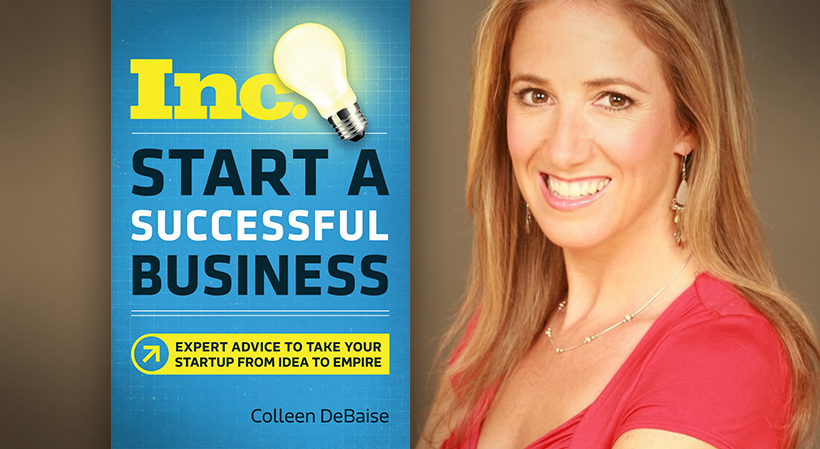The following is excerpted from “Start a Successful Business: Expert Advice to Take Your Startup from Idea to Empire” by Colleen DeBaise © 2018 AMACOM/AMA All rights reserved. Published by AMACOM Books www.amacombooks.org Division of American Management Association 1601 Broadway, New York, NY 10019
“My idea must be a breakthrough.”
Many people equate the idea of innovation with disruptive innovation. “But the fact is that for most businesses, placing big bets on high-risk ideas is not only unfeasible, it’s unwise,” says Adam Bluestein, a contributing writer at Inc.
On average, the most successful companies devote about 70 percent of their innovation assets (time and money) to “safe” core initiatives; 20 percent to slightly riskier adjacent ones; and just 10 percent to transformational, or disruptive, ones. That’s according to a 2012 report by innovation consultants Bansi Nagji and Geoff Tuff.
Core innovation involves making incremental changes to improve existing products for existing customers—think selling laundry detergent in capsule form. Adjacent innovations draw on a company’s existing capabilities and put them to new uses—see Procter & Gamble’s Swiffer, a re-envisioning of the old-fashioned mop to attract a new set of customers. Transformational (a.k.a., disruptive) innovations involve inventing things for markets that don’t exist yet—say, the automobile or the internet.
The 70:20:10 ratio isn’t set in stone. “Depending on your industry, your competitive position in it, and your stage of growth, you may need to make adjustments,” Bluestein says. Tech companies, for example, tend to spend less time and money improving core products because their market craves novelty, and so they may put more effort into risky ideas. Consumer-products companies with established product lines tend to focus mostly on incremental innovations.
Related: Disruptive Innovator Clayton Christensen Illustrates the Jobs Theory
Of course, when a disruptive innovation succeeds, the returns can be enormous, with 70 percent of total returns coming from breakthrough initiatives. Bottom line: Every business needs some practice coming up with ideas that will change everything, but it is unwise to let the pursuit of the breakthrough overshadow the many smaller initiatives that sustain a business over the long run.
Here’s a look at three more innovation misconceptions.
- “You can’t have too many ideas.” Sure you can, if you don’t know what to do with them.
Coming up with ideas isn’t nearly as hard as determining which ones are any good and figuring out what to do with them. Small companies can be crushed under the weight of too many ideas. When you’re running a business, a big part of your job is to kill the weak ones.
But most companies lack processes to decide which ideas to pursue, much less ways to measure their success. Picking the right ideas starts with being clear about your company’s mission. A cool idea that excites your engineers should never become a working project until someone can articulate how it actually solves a pressing problem that your customers have. The business case for pursuing an innovation should include an indication of how to measure its impact, says Robert Sher, founding principal of the Bay Area consulting firm CEO to CEO. “The goal could be increasing brand awareness, customer satisfaction, customer retention,” Sher says. “Make sure you measure something crucial to your outcome.”
- “Innovation is about stuff.” It’s not—and you might want to consider a business-model revamp instead.
Most companies focus most of their innovation efforts on new products and product extensions, according to research by the consultancy Doblin. But these kinds of innovations, it turns out, are the least likely to return their cost of investment, with a success rate of only 4.5 percent. Instead, Doblin found, companies get the highest return on investment when they focus on things such as improving business models, internal processes, and customer experience.
“The most valuable innovations are platform-level innovations,” says Larry Keeley, a director at Deloitte and the author of “Ten Types of Innovation.” Though Apple is rightly famous for well-designed devices, he says, “Apple’s most valuable innovation is the iTunes store.” Almost as integral to Apple’s success have been the company’s aggressive tax-avoidance strategies—such as creating offices and subsidiaries in low-tax locales such as Nevada, Ireland, and the British Virgin Islands. “It’s created a very advantaged business model,” says Keeley.
Similarly, Amazon makes little money on Kindle sales. The device’s real value comes from the way Amazon has linked it to its massive inventory of eBooks. Other examples of non-product innovation include the collaborative-consumption models of Zipcar or Airbnb, Zappos’s positioning of itself as “a service company that just happens to sell shoes,” and the values-driven strategies of Patagonia and Whole Foods.
Rather than obsessing over your next new product or service, it might be smarter to work on a new profit model or a better customer experience.
- “Innovation is costly.” Actually, spending has little to do with results.
Apple, ranked as the most innovative company for the past three years, spends just 2.2 percent of its sales on R&D efforts. That’s well below the industry average of 6.5 percent for computing and electronics and far less than rivals such as Google, Samsung, and Microsoft. In fact, Apple ranks fifty-third among the 1,000 top R&D spenders in all industries.
Sign Up: Receive the StartupNation newsletter!
“There’s a logic fallacy that if you spend more, you get more innovation,” says Michael Schrage, a research fellow at MIT and an advisor on innovation to companies such as Procter & Gamble and Herman Miller. Measuring innovation properly, Schrage says, means getting away from looking at inputs—that is, your R&D dollars—and focusing on the outputs that your efforts are generating with customers. “Unless you can show that customers and clients are getting more value from your new offerings,” Schrage says, “it’s less likely to be innovation and more likely to be waste.”
“Start a Successful Business: Expert Advice to Take Your Startup from Idea to Empire” is available now at fine booksellers and can be purchased via StartupNation.com.






